Disclaimer: We are serious about content integrity and staying true to our readers. Thus, you can be assured that any article you read across our website is free of bias and is not produced by AI-platforms. Also, this post contains a few affiliate links. If you click on them to make a purchase, we may earn a small commission at no extra cost to you. Read about our editorial policies.
The boulder-strewn landscape of Hampi slowly unfolded itself, as we headed towards Matanga Hill. We were awe-inspired to witness the sights — acres of shrublands studded by asymmetrical gray rocks, interspersed with lush green bushes.
On the farthest corner of this vista, the Matanga Hill stood tall against the clouded skies. It wasn’t like your usual triangular-shaped structure. This hill boasted of numerous shapes and textures formed through its varied boulders. But wait, if you thought this is it, hold on.
A visit to Matanga Hill offers a lot more than what meets the eye. There are several interesting things you can do in and around Matanga Hill, which make it one of the best places to visit in Hampi.
In this article, I will take you on a virtual journey to Matanga Hill, so that you can make the most out of your outing. But first, let’s look at its historical significance.
Contents
Brief History Of Matanga Hill, Hampi

Matanga Hill is one of the historical places in Hampi that’s directly associated with the Kishkinda chapter of Ramayana, according to Hindu mythology. As per local beliefs, Monkey king Sugriva was living in Matanga Hill with Lord Hanuman and his subjects, when Lord Rama and Lakshmana met them. Here, they pleaded for the monkey kingdom’s help in their search for Goddess Sita. In return, Lord Rama helped Sugriva by killing his evil brother Vali.
8 Best Things To Do At Matanga Hill, Hampi
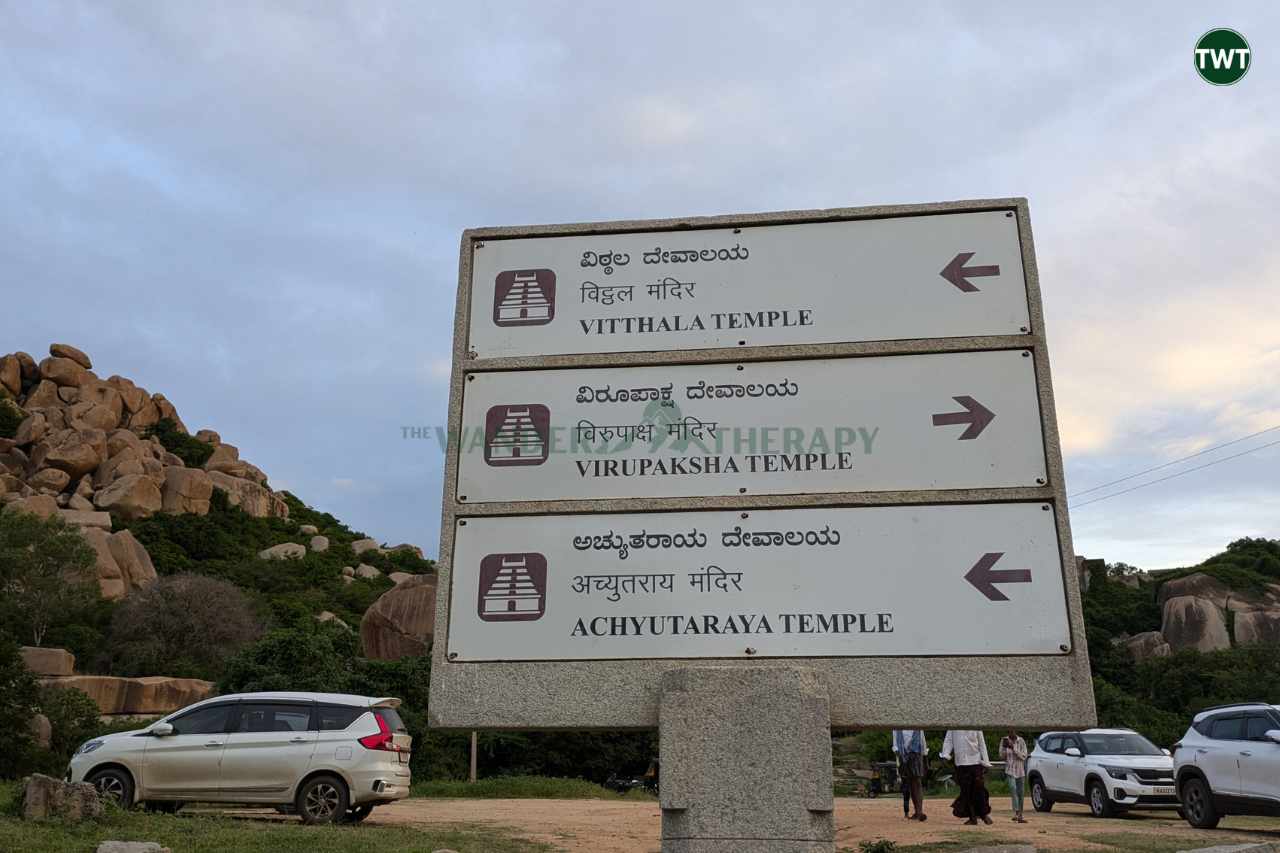
A visit to Matanga Hill can be a complete half-day or full-day adventure, comprising treks, ancient temple visits, coracle rides and more! Here’s a step-by-step guide to how you can cover Matanga Hill and its surrounding areas to have a satisfying trip:
# Step 1 – Explore Hampi Bazaar
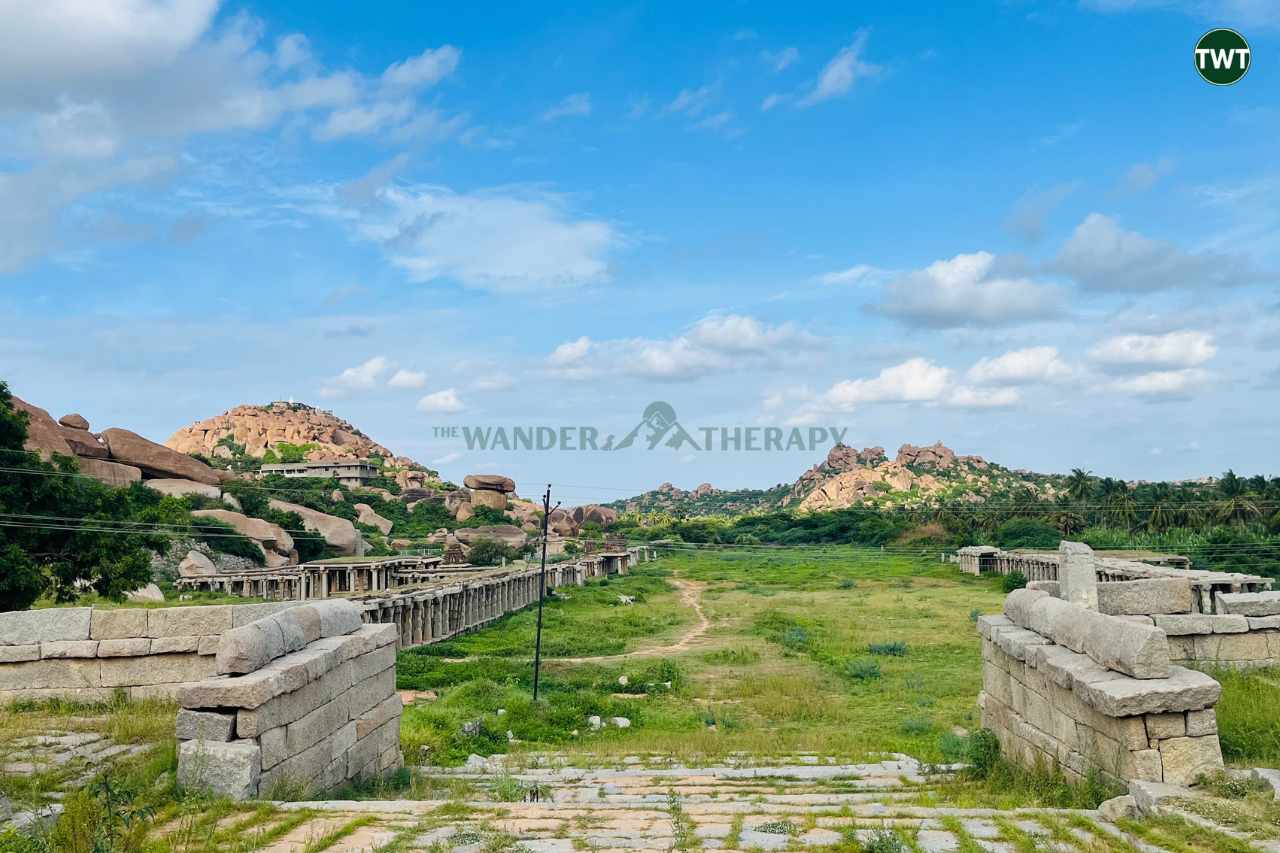
As soon as you park the car and step out, you will find ruins of the Hampi Bazaar nearby. This is where diamonds and other precious gems used to be sold out in the open during the heydays of Vijayanagara empire — informed our tour guide, Mallesh anna. It can be fascinating to walk through the bazaar’s remains, while imagining how busy and vibrant the spot used to be back in the day.
# Step 2 – Check Out The Nandi Sculpture
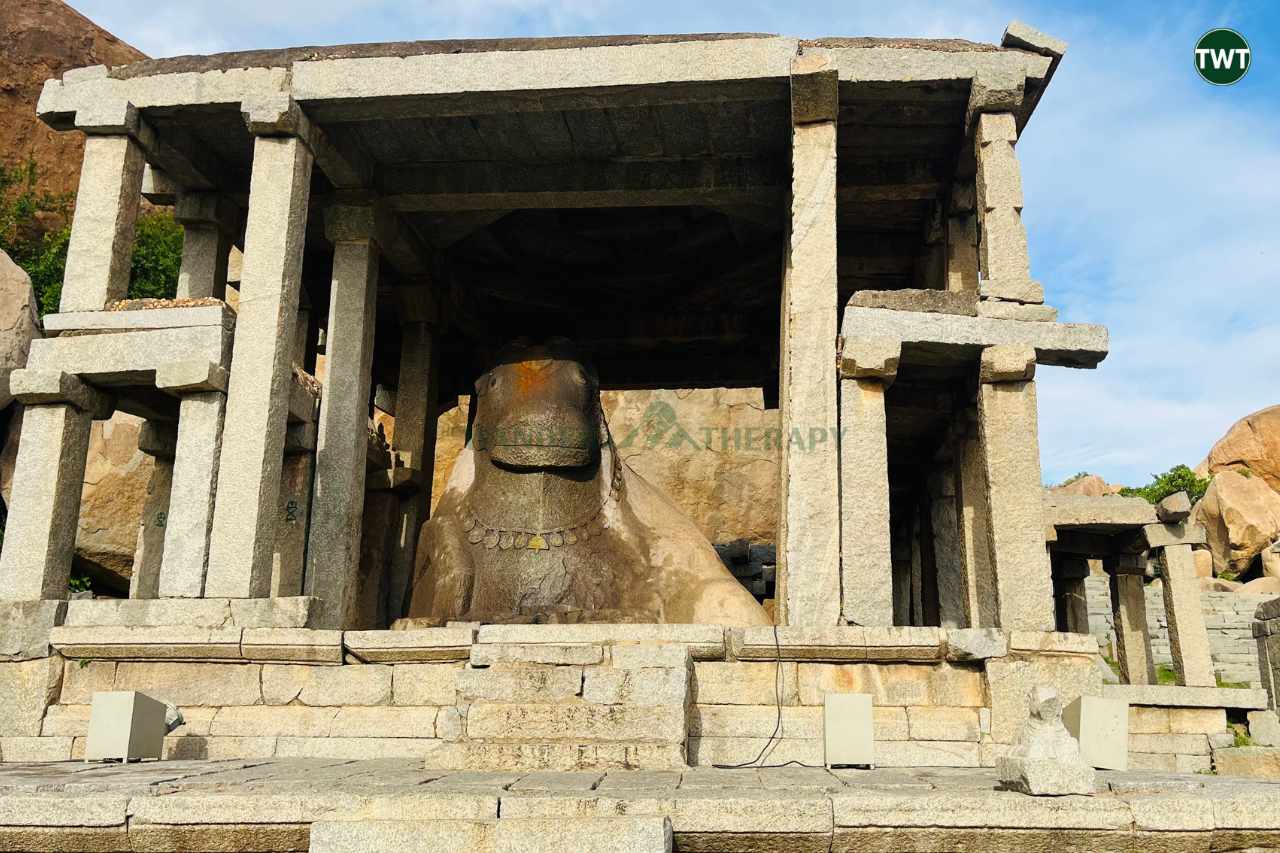
Just before climbing the steps that lead to Matanga Hill, you will find an ancient stone sculpture of a bull, which is revered as Nandi (Lord Shiva’s sacred disciple) in the Hindu traditions. This particular monolith structure holds special significance, as it faces the Virupaksha Temple (dedicated to Shiva), located just a few meters ahead.
# Step 3 – Trek Up To Matanga Hill
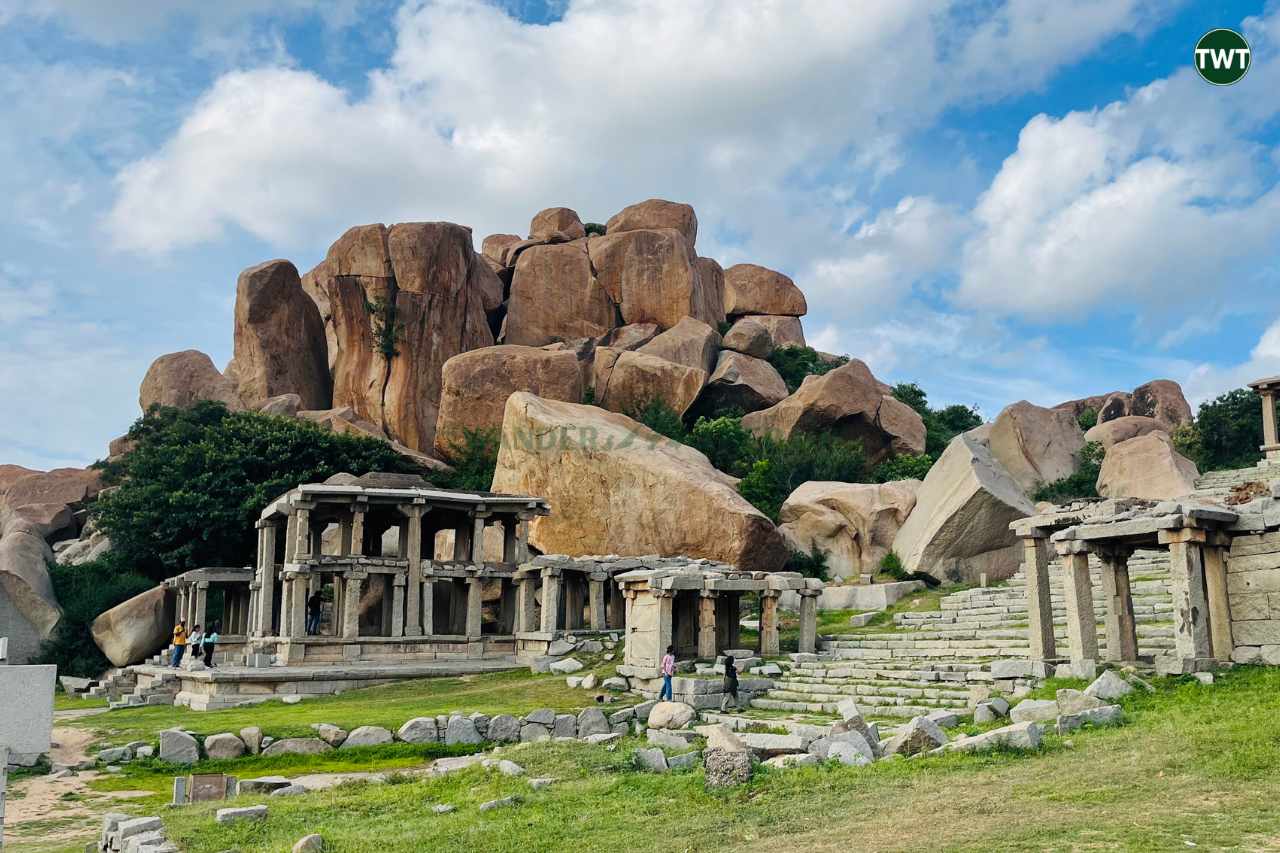
Next, try a 30-minute trek to the top of Matanga Hill to get a bird’s eye view of Hampi’s stunning topography. It’s an easy-to-medium level trek that you can easily complete wearing comfortable sports shoes. After you reach the top, you can also visit the Veerabhadra Temple, besides soaking in the vistas.
TWT Tip: It’s extremely essential to maintain a careful pace and wear strong, sturdy sneakers during your trek, as some of the steps can be quite slippery. Carry a water bottle along with you to hydrate regularly and snacks for sudden hunger pangs. You won’t find any eateries or stores here.
# Step 4 – Visit Achyutaraya Temple
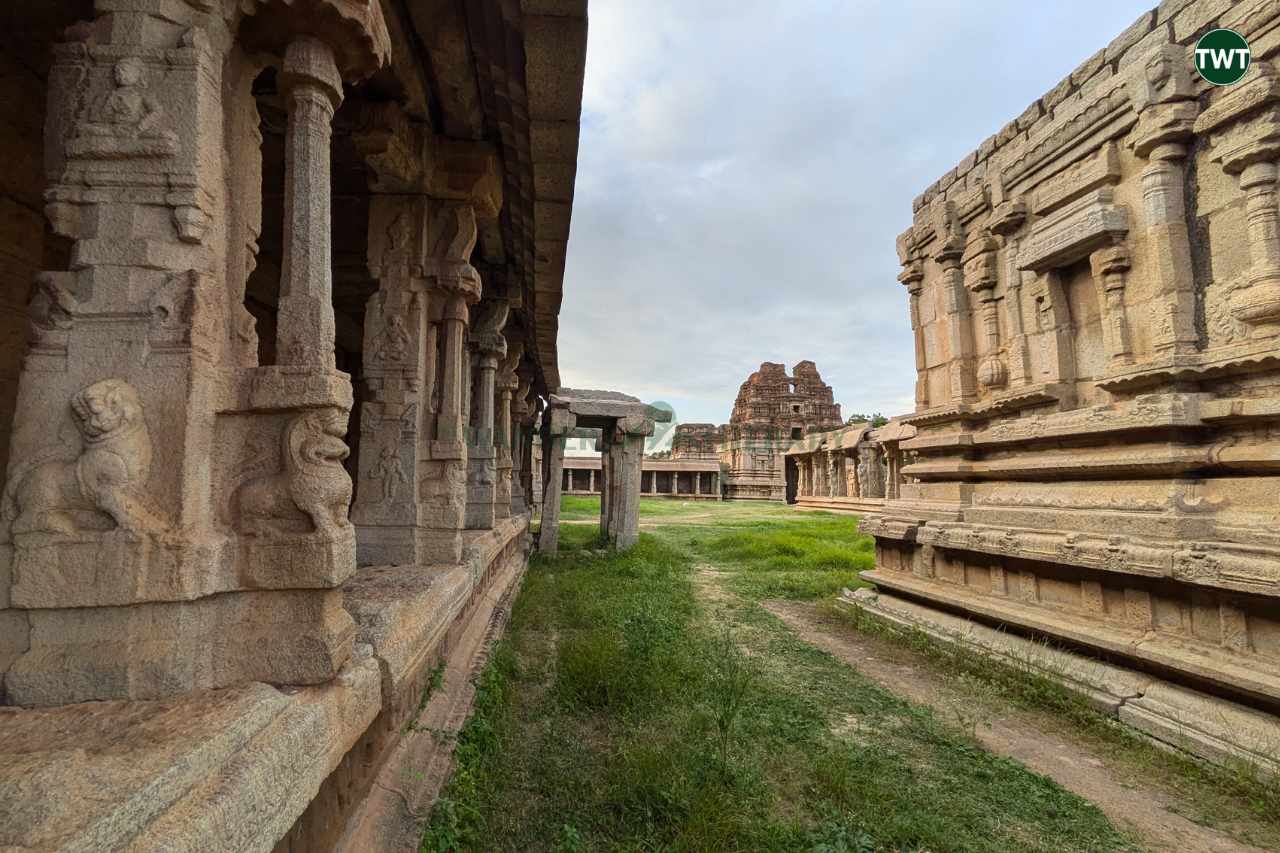
Once you return down to the hill’s base, take a short walk towards the right side to reach another must-visit place in Hampi — the 15th century Achyutaraya Temple. Though several parts of it have been destroyed, the temple still retains its glorious architecture.
An exquisitely-carved, broken gateway led us into the inner complex of the temple, where a large pillared hall beckoned us to touch and feel its layered craftsmanship. The hall is surrounded by a courtyard and several smaller structures featuring intricate carvings of lions and mythical creatures.
# Step 5 – Get Stunning Photos At Pushkarini
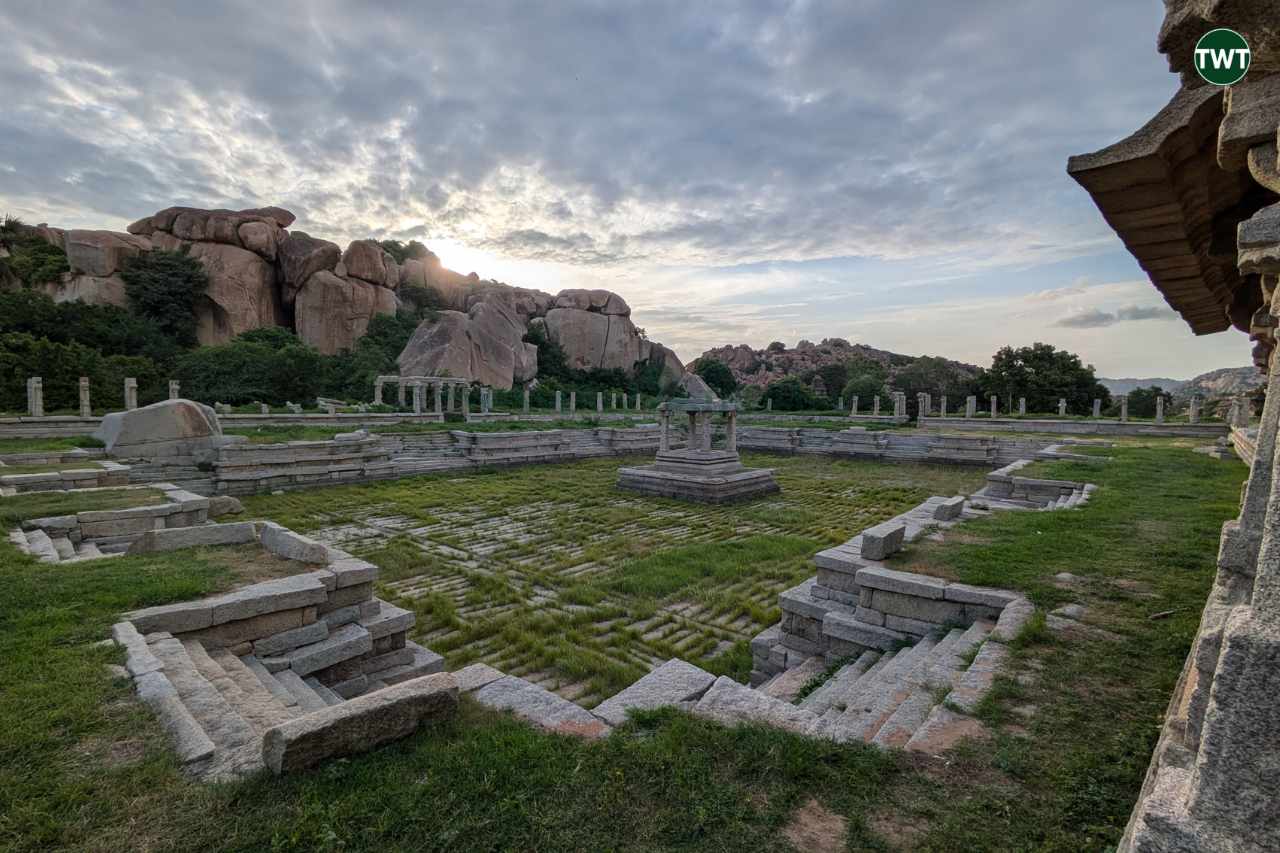
After coming out of the temple, a quick stroll takes you to a pushkarini (stepped tank), which is sure to allure you with its beauty. Built with symmetrical stone steps juxtaposed with plain surfaces (probably for seating), the stepwell features a stone pavilion right in the middle. It makes for a scenic spectacle against the overlooking pillars and hilly landscapes.
# Step 6 – Go For Coracle Ride In Tungabhadra River
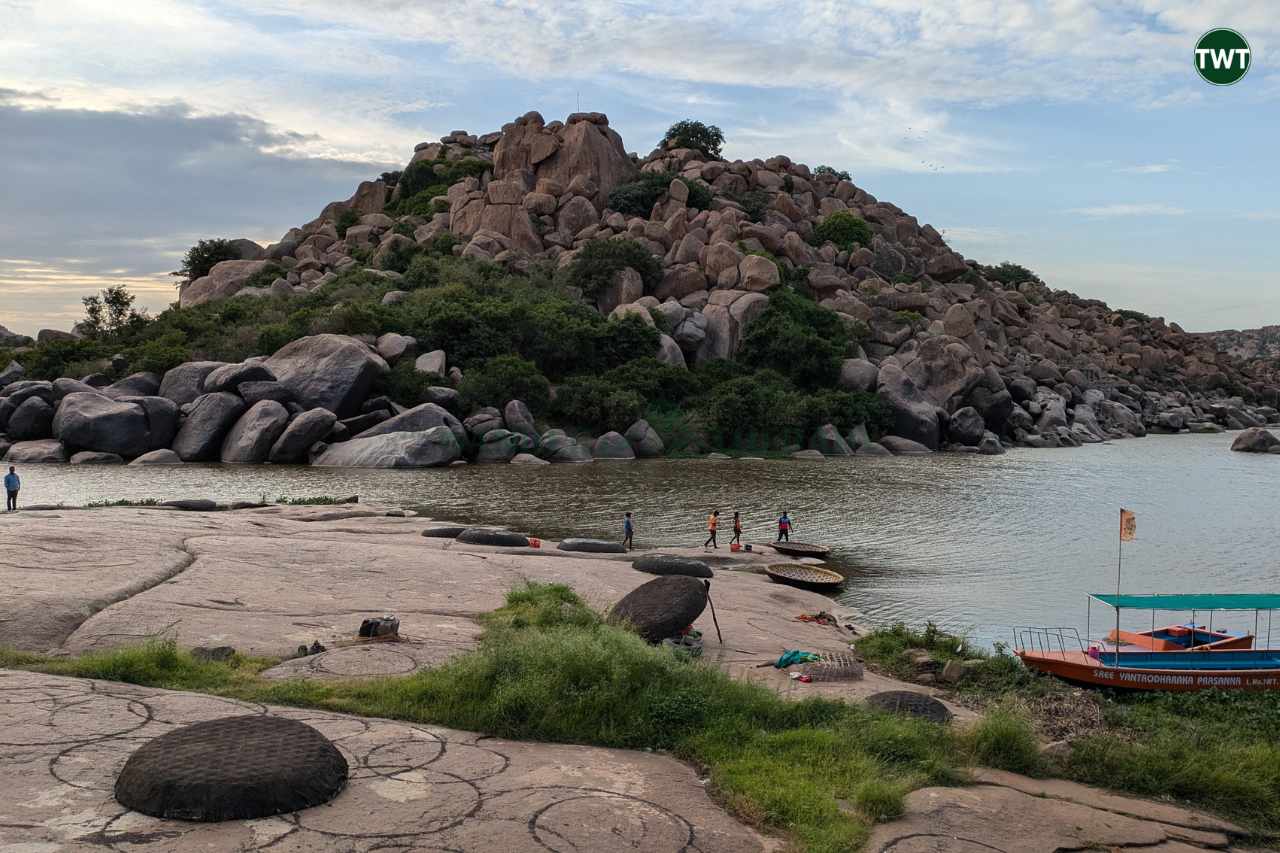
Next up is one of the most exciting parts of your Hampi trip, as the trail culminates at the banks of Tungabhadra river. The silver water of the river glistens under the sunshine, flanked by large boulders and a few coracles (traditional round wicker boats) parked by the banks.
Here, you can opt for an adventurous ride on the coracles, which usually includes an adrenaline-pumping spin in the river. Remember to inform your rower, if you just prefer a slower and peaceful ride.
Warning: Hold your boat tight and avoid jumping into the river, as it could have crocodiles. Also, check the weather conditions before venturing into the river on your coracle, especially during the monsoons.
# Step 7 – Take A Walk Through The Caved Kampa Bhupa Path
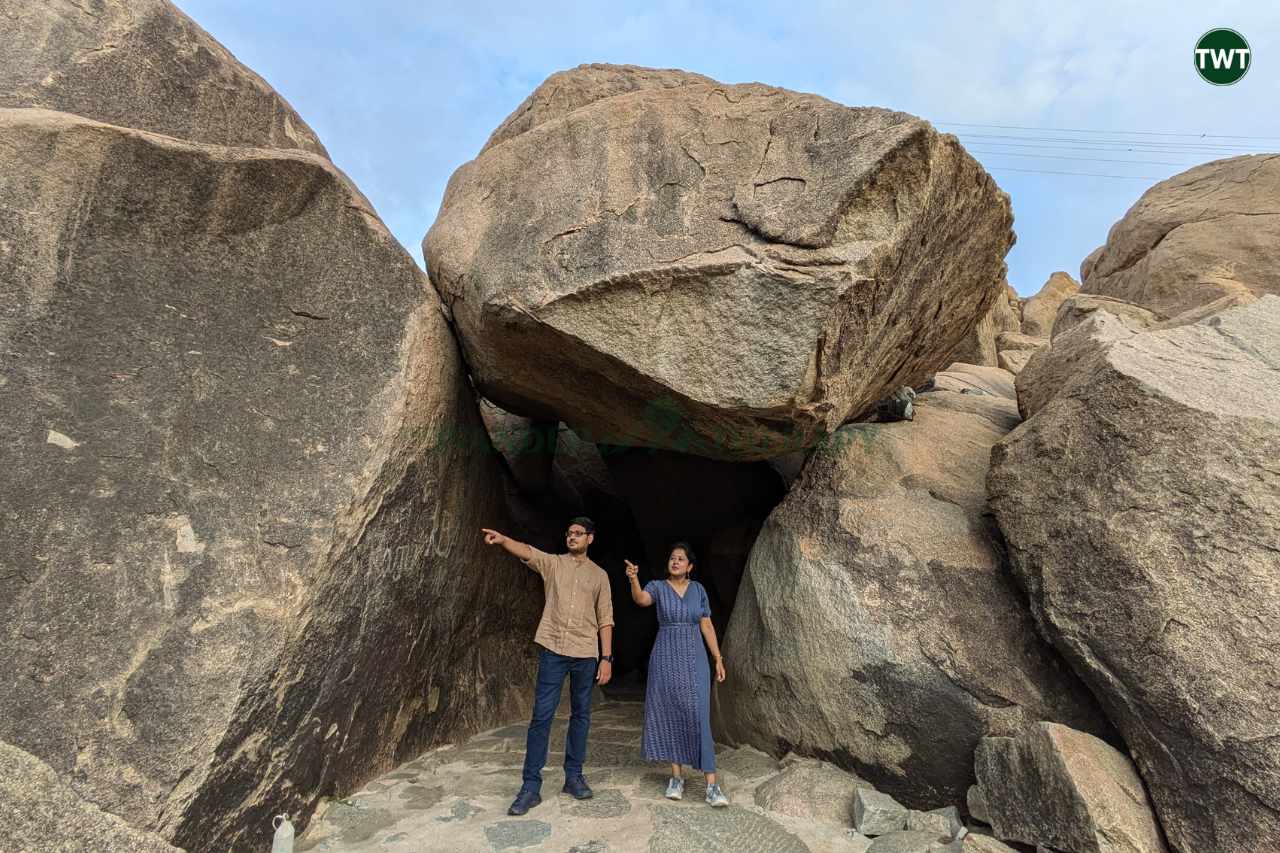
After your coracle ride, enter a caved pathway called the Kampa Bhupa Path to go back to the parking area. The path is worth a stop, as it intrigued us and let our imagination take shape — especially after hearing from our guide that the monkey kingdom (mentioned in the Ramayana) lived around this place once upon a time.
# Step 8 – Offer Prayers At Virupaksha Temple
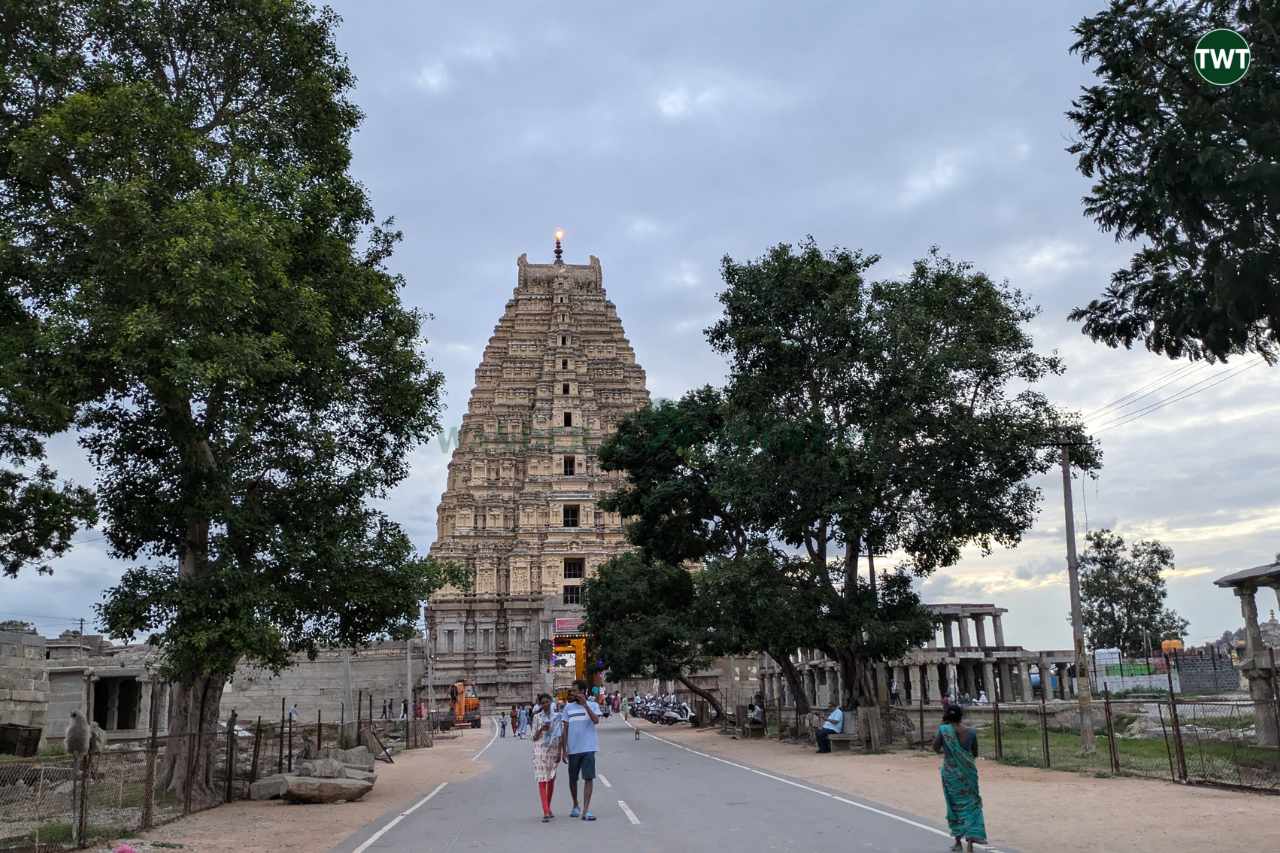
When you return to the parking lot, you can visit the Virupaksha Temple (located on the opposite side of the road) before bidding adieu to the area. It’s the sole temple of Hampi that has not been ruined during the attack on the ancient city.
Thus, the 7th century Shiva temple is fully functioning and boasts exquisite craftsmanship on its pillars, ceiling and gopura. We were also fascinated to see a huge number of monkeys here.
TWT Tip: If you have the time and energy for some more adventure, you can also go on a 20-minute hike from the other side of Kampa Bhupa Path to reach the Vijaya Vittala Temple. It is famous for its intricate stone chariot that features on the 50 rupees note of Indian currency. However, you can also take an auto or taxi to reach the temple by road.
How Much Time Does It Take To Explore Matanga Hill?
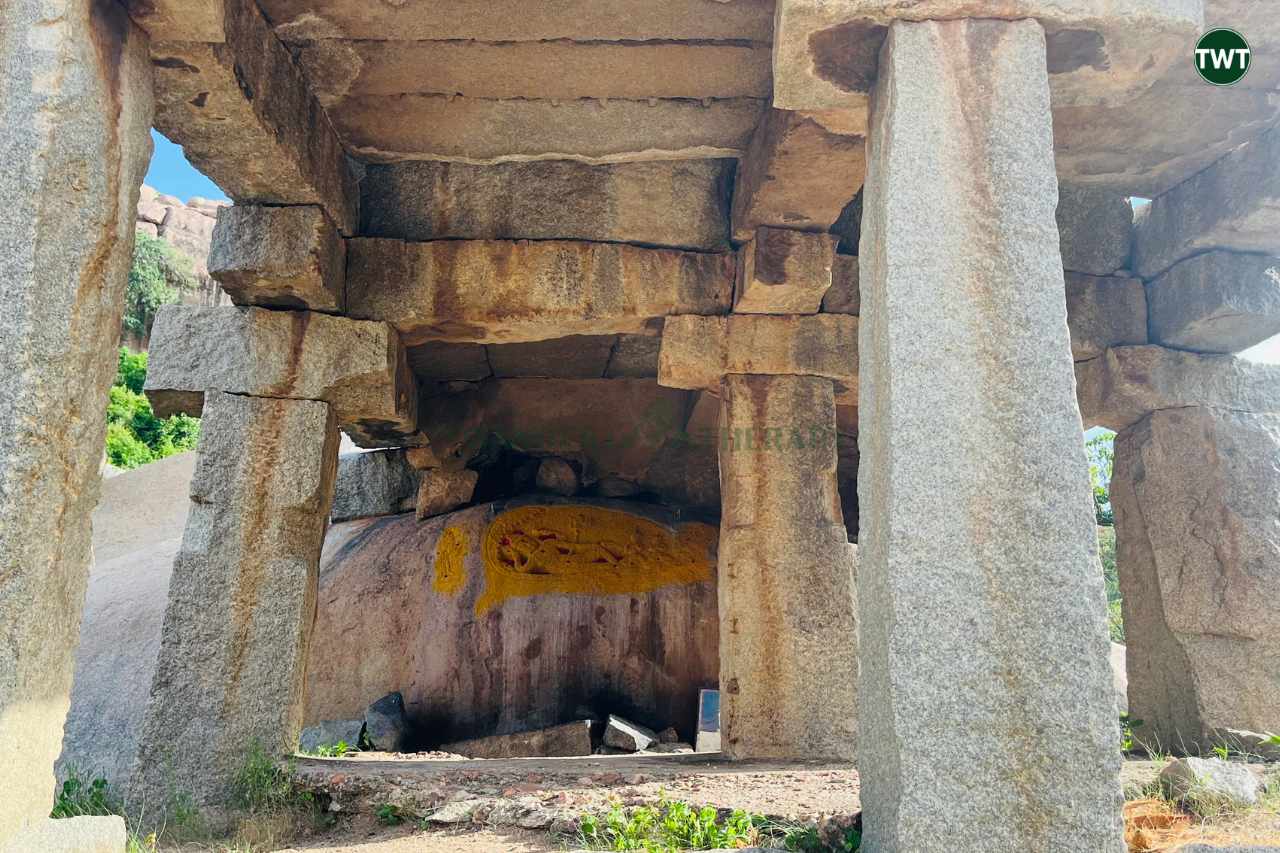
If you wish to explore the entire area of Matanga Hill fully with enough halts for rest, it can easily take 4-5 hours — especially if you’re going for all the treks, coracle ride and temple visits. However, you can even complete your Matanga Hill trip in 1-2 hours, if you skip some of the places mentioned above.
What Is The Best Time To Visit Matanga Hill?
We highly recommend that you attempt the Matanga Hill trek right after sunrise or just before sunset to witness the breathtaking skyline of Hampi change its colors between blue-purple and red-yellow.
If you’re visiting early in the morning, you can start with the hill trek and then follow it up with the rest of the spots. In case you’re planning an evening visit, reach around 4 PM so that you can cover most of the must-visit points by sunset and then sit down to relish the hues of Hampi’s dusk.
Other Tourist Places Of Hampi Near Matanga Hill
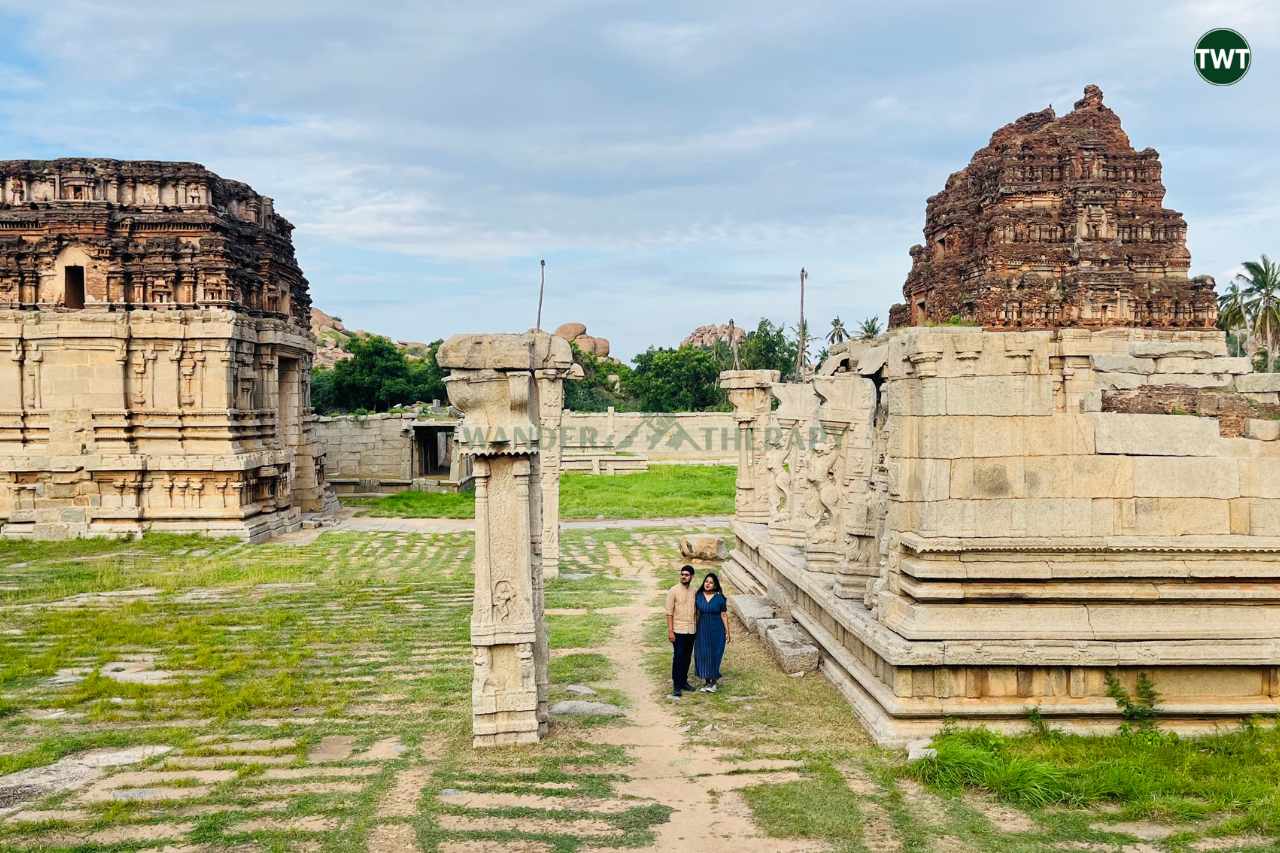
- Virupaksha Temple
- Achyutaraya Temple
- Lotus Mahal
- Tungabhadra River
- Hampi Bazaar
- Pushkarini
- Vijaya Vittala Temple
- Royal Enclosure
- Queen’s Bath
- Hazara Rama Temple
- Hampi Archeological Musuem
TWT Experience Summary Of Matanga Hill, Hampi
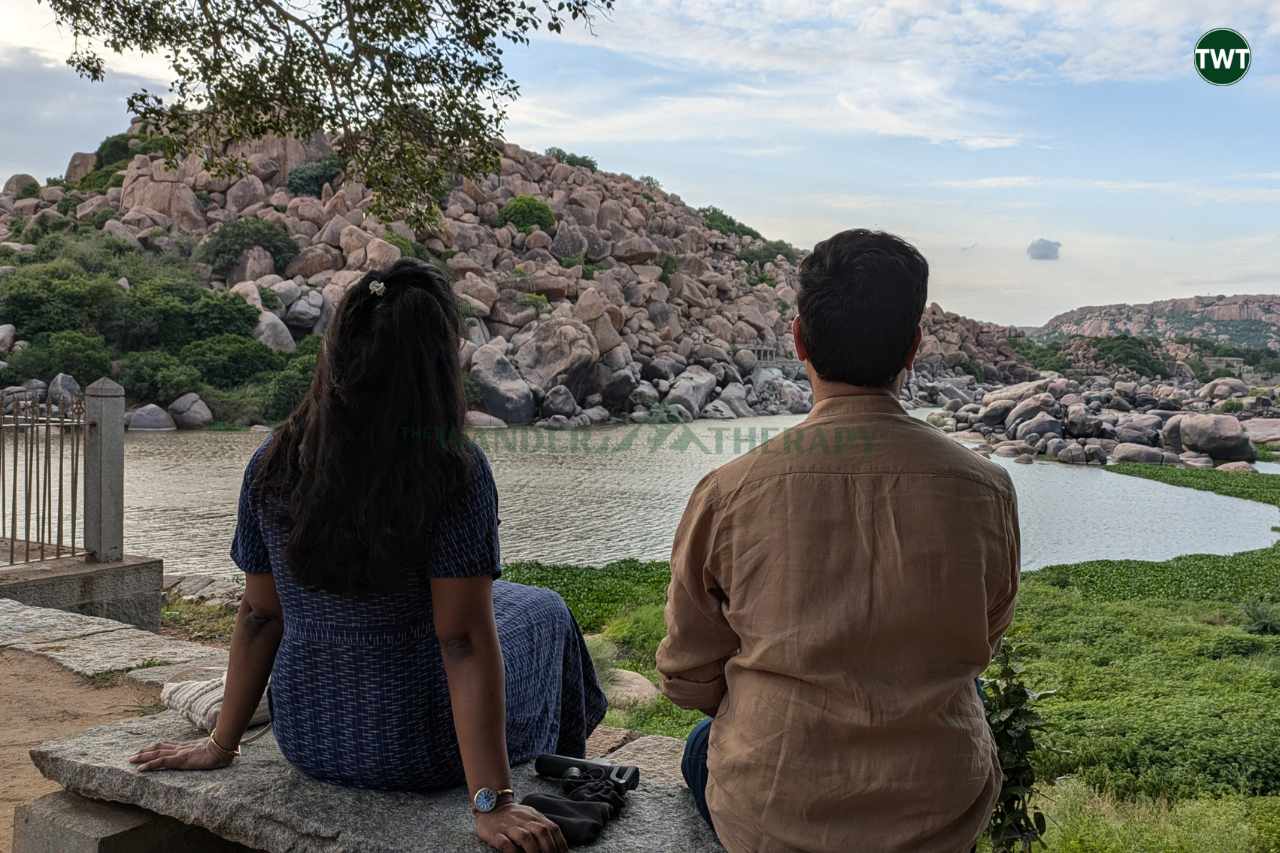
A trip to Matanga Hill is not just limited to a mere trek and conquering a summit. As you meander through hidden trails lined by gorgeous ancient temples and the beautiful Tungabhadra river, you are bound to get fascinated by the beauty and history of the place.
It also offers a chance to enjoy breathtaking sunrises and sunsets amidst the boulder-laden land that enwraps Matanga Hill, which may have once been a shelter for Lord Hanuman and the monkey kingdom.
Entry: Free
Matanga Hill timings: Sunrise to sunset
Location of Matanga Hill: Google Maps
Frequently Asked Questions About Matanga Hill, Hampi
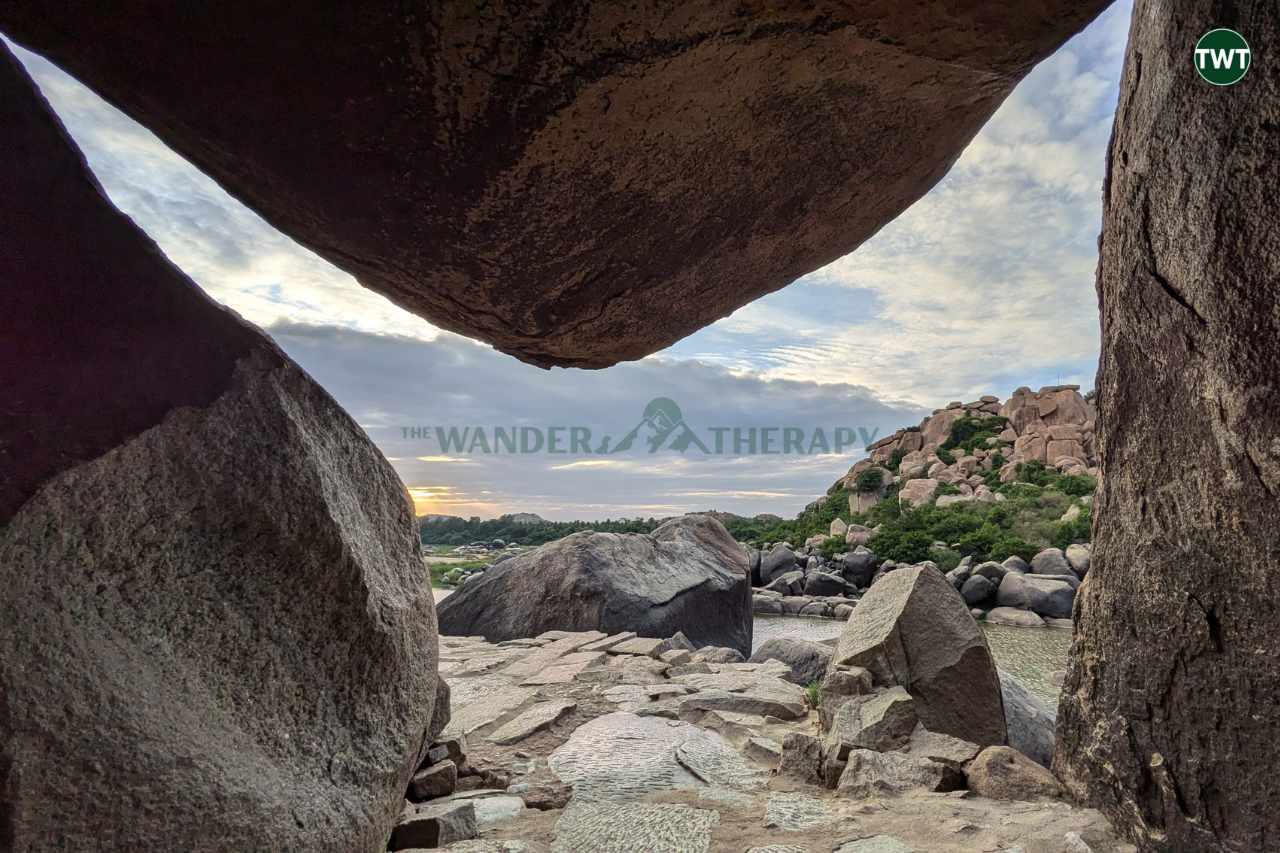
1. How difficult is the Matanga Hill trek?
The Matanga Hill trek can be considered an easy-to-medium level one, as it’s a 30-minute long journey with clear steps that lead to the top. However, it’s important to keep in mind that the steps can be quite uneven and slippery in certain points. Thus, it’s advisable to wear non-slippery sports shoes and maintain a slow pace.
2. How can you reach Matanga Hill, Hampi?
Matanga Hill is nestled in Hampi’s Nimbapura and is very close to the Vijaya Vittala Temple. You can easily take an auto from here or any other sightseeing spots of Hampi. Alternatively, you can also hire a bicycle or taxi and use Google Maps to reach the location.
3. Is there an entry fee to visit Matanga Hill?
Matanga Hill is not a guarded area and there’s no entry fee involved. You can visit the hill for free anytime after sunset or before sunrise. Avoid venturing into the hill in the night.
4. What should I bring when visiting Matanga Hill?
We highly recommend you to carry a water bottle and some snacks, and wear sports shoes while trekking to Matanga Hill. You can also bring along binoculars and cameras to watch and shoot the landscapes and birdlife.
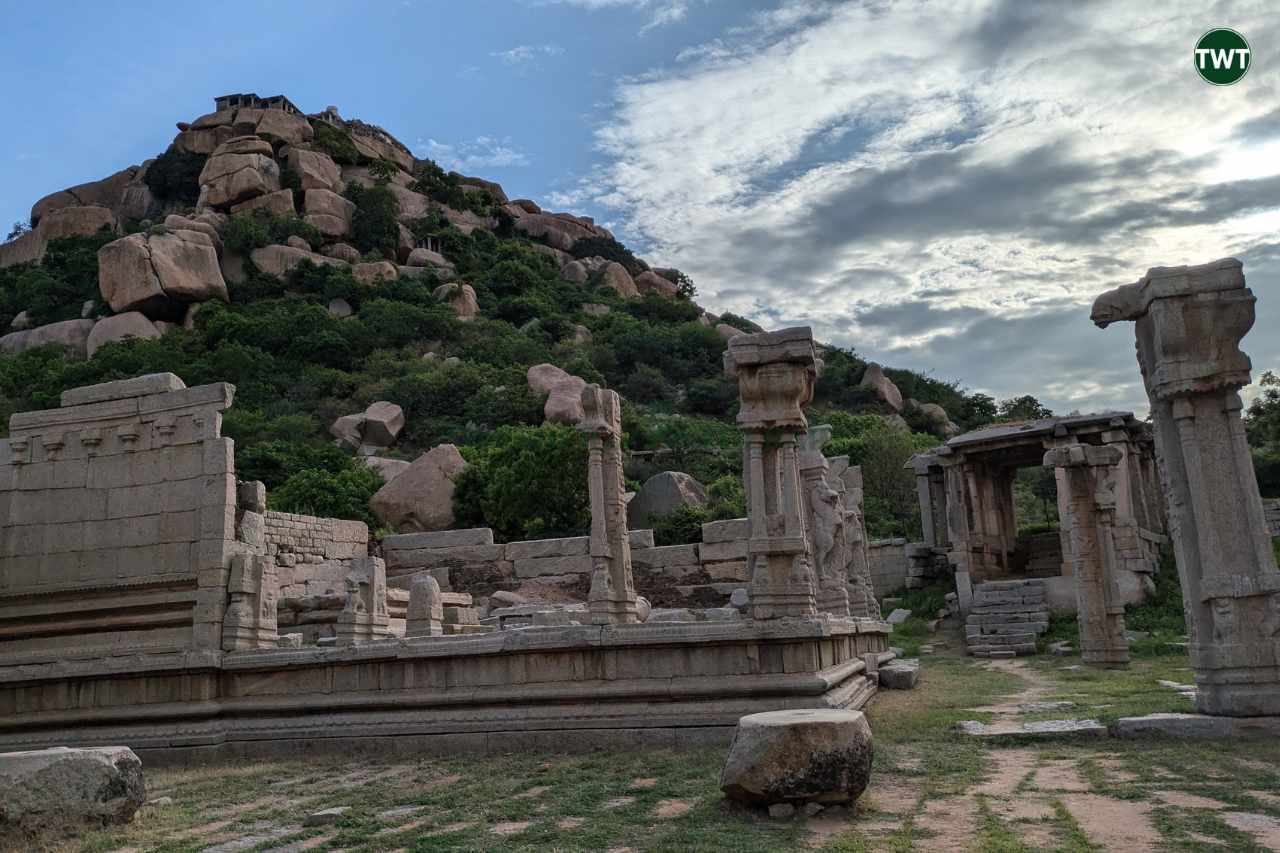
5. Are there any temples or monuments on Matanga Hill?
Matanga Hill has a Shiva temple on the top and several other ancient temples near its base, including Achyutaraya, Kodandarama and Virupaksha temples. There are no monuments as such here. Most of the Hampi monuments are located 10-15 minutes away from the hill.
6. What can I see from the top of Matanga Hill?
You can visit a Shiva temple on the top and view the entire boulder-studded landscape of Hampi, including the distant Anjanadri Hill, Hemakuta Hill and top-angle views of the beautiful Virupaksha Temple and Achyutaraya Temple.
7. Why is Matanga Hill famous?
Matanga Hill is famous for its uniquely shaped structure and bouldered terrain that surrounds it, which include beautiful historic temples. It is also known as the halting place for Lord Hanuman, Sugriva and his monkey kingdown when they first met Lord Rama and Lakshmana.
View this post on Instagram
Frequent Traveler? Here’S Some More Travel Goodness From Us:

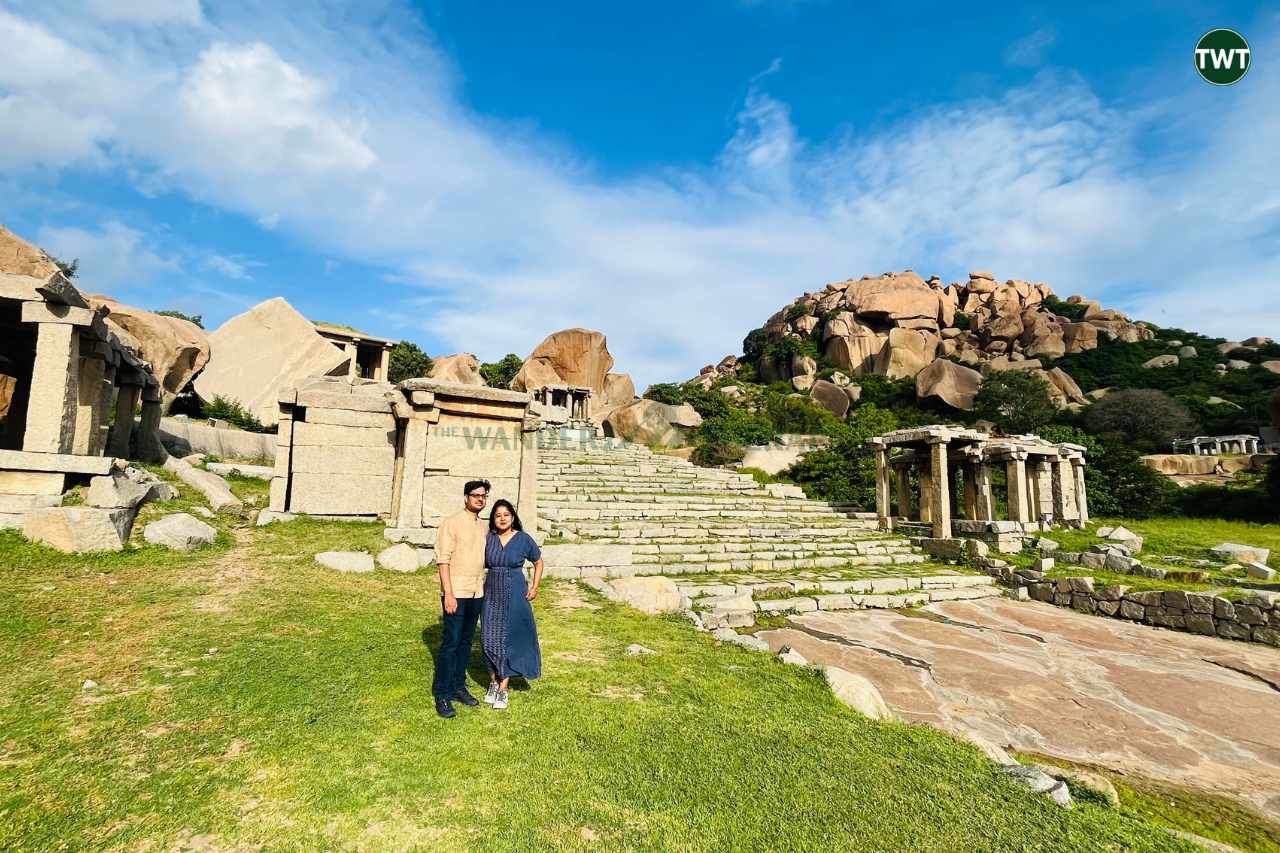

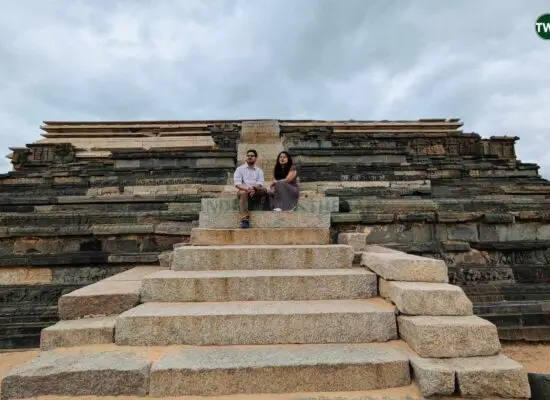
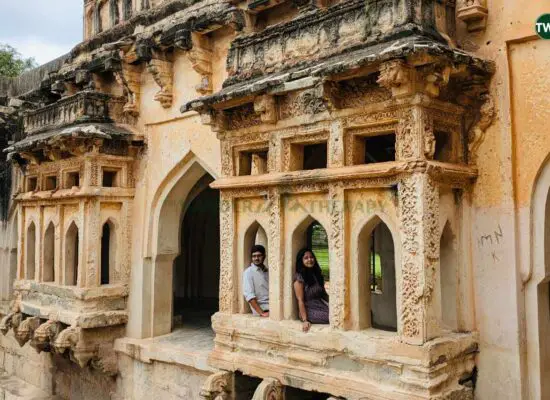

2 thoughts on “Matanga Hill Hampi: Hidden Trails & Treks That Uncover Pieces Of History Amidst Boulder-Studded Vistas”
Very well written article with all Historical information. Nice to read. Travelers would love this place.
Thank you so much for taking the time to leave your valuable feedback on our content. 🙂 It means a lot to us.